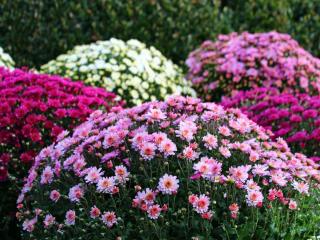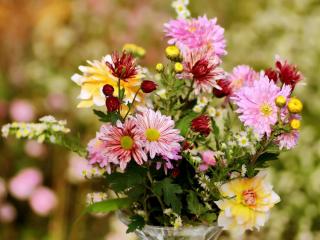

The autumn daisy is famous for its ornamental value on tombs, but it is also a magnificent plant to flower our gardens and terraces.
Key Autumn Daisy facts
Name – Chrysanthemum
Family – Asteraceae
Type – annual and perennial (depending on the variety)
Height – 16 à 28 inches (40 to 70 cm)
Exposure – full sun
Soil: ordinary – Flowering: June to November
Planting and care, read these key points to know to have nice daisies.
Autumn daisy is planted ideally in spring because even if it will only bloom at the end of summer or in fall, it will have developed a great root system and will resist the harshness of fall and winter much better.

Autumn daisy requires relatively little care, mostly only watering regularly when there’s no rainfall.
 Remove wilted flowers as they appear, since this increases production of new flowers.
Remove wilted flowers as they appear, since this increases production of new flowers.Autumn daisy falls victim to several diseases and parasites that are nonetheless avoidable, especially if care is taken to avoid wetting the foliage and space each plant sufficiently so that they don’t touch each other.

Over there, it is called the Autumn flower and it symbolizes joy and pleasure.
There are a great many chrysanthemum varieties.
They are known for their pink, red, orange, yellow or white hues.
They have the advantage of blooming late, until the month of November or December, and thus come garnish our gardens right when flowers start to become rare.
They are also planted in pots to adorn balconies and terraces.
Chrysanthemum is very versatile and will fit in perfectly in a flower bed, in a pot or garden box, and also simply to decorate any portion of the garden.
If you wish to choose a specific color, purchase it in a pot (container) just as they begin to bloom, and transplant them to your garden.